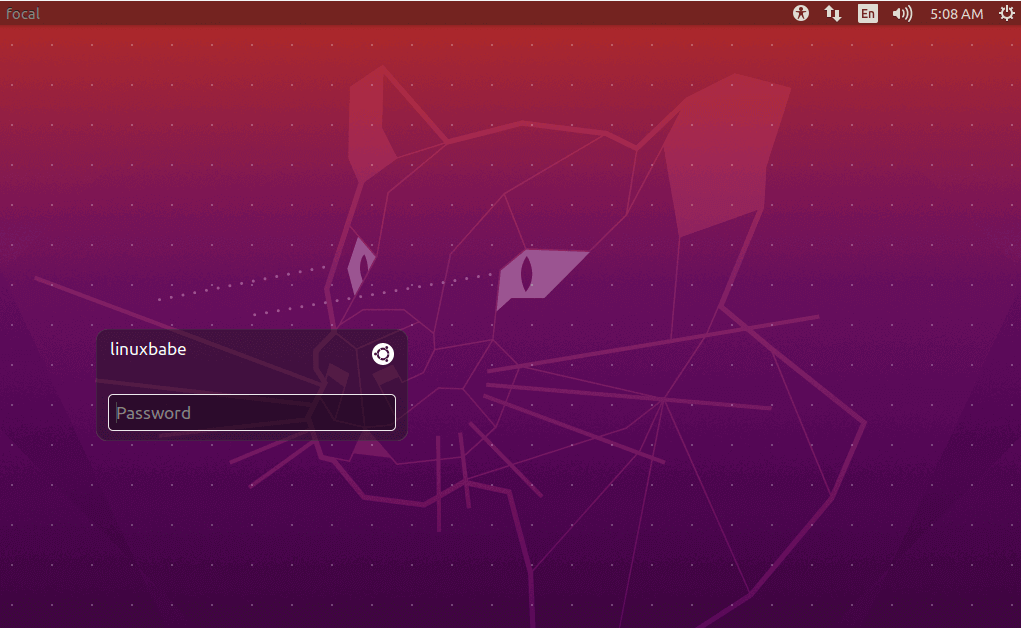Install Ubuntu Lts
I was trying to get Ubuntu Server 20.04.1 LTS Focal Fossa installed on a Raspberry Pi 3 B+. While this seems like it should have been a straightforward endeavor, it was rife with trial and error, and hence frustration.
Here’s what finally worked for me.
Ubuntu 18.04 is officially out!!! The latest LTS and current version of a most famous opensource desktop operating system from Canonical, released on April 26th, 2018. Ubuntu has been favorite for desktop users for a long time, could see large-scale of deployments in the recent years. Ubuntu releases new OS versions every six months with. In this post we will demonstrate the Installation steps of Ubuntu 20.04 LTS for Laptop or Desktop. Let’s first look into some of the new features that have included in this release. New Features of Ubuntu 20.04 LTS Desktop: Ubuntu 20.04 LTS is released with latest and stable kernel version 5.4; Package updates and support until 2025. Download the latest LTS version of Ubuntu, for desktop PCs and laptops. LTS stands for long-term support — which means five years, until April 2025, of free security and maintenance updates, guaranteed. Ubuntu 20.04 LTS release notes. Recommended system requirements: 2 GHz dual core processor or better; 4 GB system memory; 25 GB of free hard.
GNOME is the default GUI for most Ubuntu installations and is (loosely) based on the Apple ecosystem. KDE is another popular GUI, (loosely) based on the Microsoft ecosystem. If you want to have the look and feel of a regular Ubuntu system, choose one of these desktop environments.
Install Ubuntu Lts
- Download and install the Raspberry Pi Imager tool
- Visit the Releases page for Ubuntu 20.04
- Download the
ubuntu-20.04.1-preinstalled-server-arm64+raspi.img.xzfile - Use the Raspberry Pi Imager tool to flash this file to your microSD card
I connected my Raspberry Pi with an RJ-45 cable to the physical network, and plugged in a monitor and keyboard, due to the issues I was having.
- Login with default username / password of ubuntu / ubuntu
- IMPORTANT: Run
sudo apt update && sudo apt upgrade --yes - Edit the
/etc/netplan/50-cloud-init.ymlfile - Add your wifi configuration to the file
- Run
sudo netplan apply --debug
This got me up and running, however I still have a problem where I am unable to connect to a 5Ghz wifi network. Instead, I had to connect to my 2.4Ghz wifi SSID for the time being. Keep an eye on this bug report for more information about the wifi issues.
This article will advise how to download Ubuntu 18.04 LTS, use Rufus to make a bootable USB drive from WIndows, and install Ubuntu 18.04 LTS on your PC.
Downloading 'Ubuntu 18.04 LTS' ISO image
- Go to the official website of Ubuntu at https://ubuntu.comfrom any Web Browser (Microsoft Edge is used in screenshots).
- Click on 'Download'
- Click on '18.04 LTS' under 'Ubuntu Desktop'
- The prompt for downloading should appear automatically. Click on 'Save' and be aware of where the location the file is being downloaded (default should be the 'Downloads' folder).
- In the event that the prompt to download automatically does not appear, please click 'download now.'
Install Ubuntu 18.04 Lts
Downloading and Running 'Rufus'
- Go to the official website for Rufus at http://rufus.ie/ from any Web Browser (Microsoft Edge is used in screenshots).
- Scroll down to the 'Download' section. Click on 'Rufus X.X'
- The prompt for downloading should appear automatically. Click on 'Save' and be aware of where the location the file is being downloaded (default should be the 'Downloads' folder).
- After download is complete, click 'Run.'
- Click 'Yes' to allow the 'User Account Control (UAC)' and 'Rufus' should start.
Creating the Ubuntu 18.04 LTS Bootable USB with Rufus

NOTE: 'Rufus' will format (remove) everything from your USB device. If you have any important data on the USB device, please be sure to move it somewhere safe before you go through the next steps.
- While 'Rufus' is open, insert your USB drive (minimum 8GB) that you wish to make Ubuntu bootable. It should be automatically detected by 'Rufus.'
- Click 'SELECT'
- A 'File Explorer' windows should show. Select 'ubuntu-18.04.3-desktop-amd64' and click 'Open.'
- Click 'Start'
- Click 'Yes'
- Be sure to leave the default - Write in ISO Image mode (Recommended). Click 'OK'
- 'Rufus' will format (remove) everything from your USB device. If you have any important data on the USB device, please be sure to move it somewhere safe before you go through the next steps.If you are sure that you have all important files on USB device moved to another location, click 'OK.'
- 'Rufus' will now start the function of making the USB device bootable. It will take a few minutes.
- You will see 'READY' status once the process is complete.
Booting from the USB drive and installing 'Ubuntu 18.04 LTS'
- Boot from the USB device.
- How to boot from the USB device all depends on the motherboard you have. Get into the 'BIOS' of your motherboard or access the 'Boot Manager' to select the bootable USB device that has 'Ubuntu 18.04 LTS' made with 'Rufus.'
- Hint: On some motherboards, repeatedly pressing <F2> or <DEL> or <F12> just after you pressed the power button, will allow you access 'BIOS' or 'Boot Manager.' Please reference your PC/motherboard manufacture for the proper key to access 'BIOS' or 'Boot Manager.'
- How to boot from the USB device all depends on the motherboard you have. Get into the 'BIOS' of your motherboard or access the 'Boot Manager' to select the bootable USB device that has 'Ubuntu 18.04 LTS' made with 'Rufus.'
- Select 'Try Ubuntu without installing'
- Click on 'Live session user'
- Double click 'Install Ubuntu 18.04 LTS' icon.
- Select the desired language and click 'Continue.'
- Select desired 'Keyboard layout' and click 'Continue.'
- Select either 'Normal installation' or 'Minimal installation' and click 'Continue.'
- If installing on a brand new hard drive, select 'Erase disk and install Ubuntu,' otherwise select 'Something else' and click 'Continue.'
- Make sure that the desired hard drive 'Ubuntu 18.04 LTS' is to be installed on is selected.
- If the hard drive is new and 'Something else' was selected in the earlier section, the hard drive will not have any partition table. In that case, click 'New Partition Table...'
- Click 'Continue.'
- Select 'free space' and click on the '+' icon.
- Create an 'EFI System Partition' of 512 MB disk space, with the following settings marked in the screenshot below, and click 'OK.'
- Create a '/boot' partition of 512 MB disk space, with the following settings marked in the screenshot below, and click 'OK.'
- Create a '/ (root)' partition and give it the rest of the free disk space. Make sure it has the follow settings marked in the screenshot below, and click 'OK.'
- Once all the partitions have been created, it should look something like the screenshot below. Click on 'Install Now.'
- Click 'Continue.'
- Select the desired 'Location' from the map or by typing in the text box. Once the desired location is selected, click 'Continue.'
- Fill in the details and click 'Continue.'
- The installation should then start.
- It should take a few minutes for the installation to complete. Once it's completed, the following window should appear. Click 'Restart Now.'
- The PC should restart and boot into the 'Ubuntu 18.04 LTS' operating system. Once the PC has booted, a login window should appear. Type in your 'Password' and click 'Sign In.'
- Once the above steps are completed, the PC should be logged in to the new 'Ubuntu 18.04 LTS' operating system.
Latest Ubuntu Lts

Ubuntu Current Lts
Referenced from: https://linuxhint.com/rufus_bootable_usb_install_ubuntu_18-04_lts/